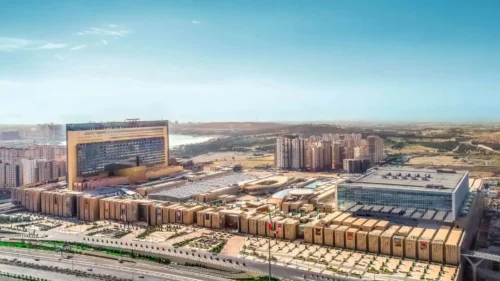
وبلاگ سپهران | Airlines | The Role of Air Traffic Control in Airport Operations
Air Traffic Control plays a vital role in ensuring the safety, efficiency, and smooth coordination of all flight movements within and around airports.
Have you ever thought about the precise coordination of airplanes taking off, landing, and flying through the skies? Behind this flawless system lies the sophisticated world of Air Traffic Control (ATC). In this article, the flysepehran, we explore how this vital system ensures safety, accuracy, and efficiency at airports. From control towers to advanced technologies, and from Iran’s specific challenges to optimal solutions, we cover it all. If you’re interested in how airports operate or how aviation works, this guide provides deep insight into a crucial yet often overlooked part of flight operations.
Air Traffic Control (ATC) is a highly coordinated system that manages and monitors aircraft both in flight and on the ground. Its primary goal is to prevent collisions, maintain flight order, and enhance operational efficiency. At any given time, dozens or even hundreds of airplanes may be in the air. Without a precise control system, the risks of in-air collisions, massive delays, or security threats would significantly increase.
ATC consists of three main components:
Air traffic controllers use radar, communication systems, and advanced software to stay in constant contact with pilots. They must make split-second decisions, prioritize aircraft, and ensure smooth and safe traffic flow. It is considered one of the most high-pressure and sensitive professions in the aviation industry.
Air traffic control is one of the most critical components of airport functionality. It plays a vital role in maintaining safety, order, and operational performance. Below are key reasons why ATC is indispensable:
One of the core duties of air traffic control is to prevent mid-air and ground collisions. Aircraft operate in limited airspace at high speeds, often following similar routes. Controllers must define safe flight paths and maintain strict separation between aircraft. In emergency situations, such as engine failure or severe weather, they must make immediate and sound decisions to ensure safety. Any mistake can result in a serious crisis. This is why ATC training and operational standards are exceptionally rigorous.
Precise air traffic control allows optimal use of runways, gates, and airspace. In busy airports like Mehrabad or Imam Khomeini International, every minute counts. Efficient coordination minimizes wait times and reduces delays, directly impacting passenger satisfaction and airline productivity. At the same time, reduced fuel consumption and lower operational costs are added benefits. Therefore, ATC not only ensures safety, but it also improves the economics of aviation.
The control tower is the beating heart of airport operations. Its operators are responsible for overseeing all ground and air movements near the runway.
Key responsibilities include:
Tower operators must possess a strong focus, quick decision-making skills, and complete mastery of communication and radar tools. Mistakes in this area can lead to runway blockage, major delays, or even accidents. In fact, no active airport can function properly without a control tower.
The main difference between Air Traffic Control (ATC) and the control tower lies in the scope of their operation and area of coverage.
Air Traffic Control is a comprehensive system for managing aircraft throughout all phases of flight. It includes several subsystems:
The control tower is just one part of the broader ATC system. Located directly at the airport, it focuses specifically on takeoff, landing, and aircraft movement in the airfield’s immediate space.
Responsibilities of the control tower:
In summary, the control tower is a localized component of the larger ATC system, functioning within the boundaries of the airport, whereas ATC encompasses the entire airspace network of a country.
| Item | Air Traffic Control (ATC) | Control Tower |
|---|---|---|
| Scope of Operation | The entire airspace of the country | Only the airport area |
| Main Duty | Guiding aircraft throughout flight | Managing takeoff and landing |
| Location | Regional centers, radar stations, and towers | Inside airports |
| Hierarchy | Main system | A subset of ATC |
Technology plays a pivotal role in the precision and safety of ATC. Key tools and systems include:
With these technologies, controllers can monitor aircraft location, altitude, speed, and direction in real-time, enabling more accurate and informed decisions. In recent years, artificial intelligence and machine learning have also begun to assist in traffic prediction and route optimization.
In Iran, air traffic control faces several challenges that directly impact airport efficiency:
These issues can lead to flight delays, reduced safety margins, and increased workload on ATC operators. Addressing them requires strategic planning, government investment, and international cooperation.
Enhancing ATC is a crucial step toward improving airport operations. Key recommendations include:
By implementing these strategies, airport capacity can be expanded, delays minimized, and passenger satisfaction increased.
Air Traffic Control is essentially the backbone of safe and efficient airport operations. From real-time operator decisions to cutting-edge radar systems, everything must function in seamless coordination. For Iran, investing in this area could significantly enhance the performance of its aviation sector. ✈️ If you’re envisioning a future with safer, delay-free airports, upgrading ATC should be a top priority.